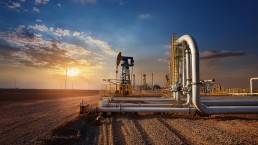The oil and gas industry operates in one of the most complex and high-risk environments globally. In such settings, making informed decisions can be the key to ensuring safety, productivity, and overall operational efficiency. With the advent of real-time data analytics, the industry is experiencing a significant shift, where data-driven decision-making is becoming integral to operational success.
Research shows that real-time data solutions are transforming the industry, helping companies achieve 25% better safety records and up to a 30% improvement in overall productivity, according to Deloitte.
The Role of Real-Time Data Analytics in Oil and Gas
Real-time data analytics offers an instant, comprehensive view of operations, essential for making quick, accurate decisions. By collecting and analyzing continuous streams of data, operators can swiftly detect risks, predict failures, and take action to maintain smooth operations. According to McKinsey & Company, oil and gas companies that effectively use data analytics could see potential savings of up to 20% in capital expenditures and a 5% reduction in operational costs.
The Real-Time Location System (RTLS) is one of the key technologies enabling this transformation. RTLS utilizes sensors and tags to track personnel, equipment, and assets in real-time, providing instant visibility into movements and conditions. This allows companies to enhance situational awareness and take proactive safety measures before potential incidents escalate.
Enhancing Safety in High-Risk Environments
Safety is a top priority in oil and gas, where hazardous conditions are constantly challenging. According to a report from the National Safety Council, workplace injuries in the oil and gas sector cost employers over $1 billion annually. Real-time data analytics, combined with RTLS, significantly mitigates these risks by enabling real-time monitoring of workers, ensuring rapid response during emergencies, and alerting personnel to hazardous situations.
RTLS also helps predict equipment malfunctions before they occur, supporting predictive maintenance strategies. The International Energy Agency (IEA) estimates that predictive maintenance enabled by real-time data can reduce unplanned downtime by 30-50%, contributing to both safety and productivity.
Boosting Productivity and Connectivity
The adoption of real-time data analytics is also driving productivity and enhancing connectivity in the oil and gas sector. By providing real-time visibility into asset locations and operational performance, companies can optimize workflows, reduce inefficiencies, and ensure resources are utilized effectively. A study by PwC highlights that organizations implementing real-time analytics experience productivity gains of 8-12% through improved equipment utilization and process optimization.
For instance, RTLS allows companies to monitor the movement of critical equipment, ensuring it is deployed efficiently to avoid delays. Furthermore, real-time communication enabled by data analytics enhances collaboration, enabling teams to make decisions quickly and resolve issues in real-time. This connectivity ensures that even remote and hazardous work environments operate smoothly.
Improving Operational Efficiency
Equipment failures, downtime, and safety incidents often hamper operational efficiency in oil and gas. According to research by Accenture, companies employing real-time analytics in their operations can reduce operating expenses by up to 5%. This efficiency boost is achieved by gaining actionable insights into every aspect of operations, from personnel tracking to asset performance.
By integrating RTLS with advanced data analytics tools, companies can not only optimize immediate decision-making but also analyze historical data to inform future strategies. Real-time analytics allows for continual process improvement, enabling companies to streamline operations and enhance long-term performance.
Digitalization with Data-Driven Connectivity as Future
Real-time data analytics, empowered by RTLS technology, is revolutionizing the oil and gas industry. With the ability to provide instant insights into operations, it enhances safety, increases productivity, and drives operational efficiency. Reports indicate that data-driven decision-making could result in significant operational improvements, including safer working environments and better use of resources.
As the oil and gas industry continues to embrace these technologies, real-time data analytics will be pivotal in navigating the industry’s complexities and ensuring that companies remain competitive, efficient, and committed to safety. By harnessing the power of data, oil and gas companies are better equipped to protect their workforce, optimize operations, and contribute to long-term sustainability.
Ready to revolutionize your workforce safety with real-time tracking & connectivity? Explore Tracklynk’s advanced RTLS solutions to transform your oil and gas operations.



